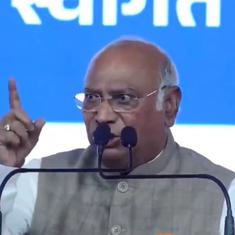In 2010, former British Museum director Neil MacGregor wrote a book called A History of the World in 100 Objects, using iconic artefacts to tell the story of more than 2 million years of human history. This year, MacGregor’s book will become the inspiration for an ambitious six-month exhibition at two of India’s leading museums, featuring more than 200 objects from different periods of Indian and global history.
The exhibition, titled “India and the World: A History in Nine Stories”, is a collaboration between Mumbai’s Chhatrapati Shivaji Maharaj museum, Delhi’s National Museum and London’s British Museum. It aims to highlight nine seminal moments in the history of the Indian subcontinent through artefacts that connect it to similar historical objects in other parts of the world.
From the stone weapons of pre-agricultural man to edicts, sculptures and paintings from Indian and British museum collections, “India and the World” will bring together artefacts from across India’s ancient and modern history.
The exhibition is meant to be a celebration of 70 years of Indian independence, and will open at the Mumbai museum only in November this year. But on February 3, the directors of the three museums announced their plans for “India and the World” through a panel discussion on the value of sharing museum artefacts to help stories from history reach a wide audience.
“As museums, our task is to make objects speak, and this exhibition will be a model for how one can engage with objects and learn from them,” said Hartwig Fischer, the director of the British Museum.
Rise of cities
Curators from the museums in Delhi, Mumbai and London have selected nine chronological “moments” in Indian and world history to exhibit through objects, starting with a section called “shared beginnings”.
“This is positioned at a time, two million years ago, when there were no political boundaries and people in different parts of the world were making rudimentary stone tools and weapons,” said Sabyasachi Mukherjee, the director general of Mumbai’s Chhatrapati Shivaji Maharaj museum. Some of the objects to be exhibited in this section include stone hand axes that are strikingly similar in shape even though they were made in disparate parts of the world.
For Mukherjee, the second section of the exhibition – the rise of the first cities around five or six thousand years ago – is particularly significant, even though historians have not yet been able to decipher the script used by ancient civilisations like Harappa and Mohenjo-Daro.
“We still have plenty of evidence to show that at that time, different communities lived peacefully, made a variety of art objects and interacted with each other through trade,” said Mukherjee. Fragments of pots from Harappan sites, for instance, have been found in the sites of ancient Babylon, while artefacts from the cities of Babylon and Mesopotamia have been found in Harappa. “People talk about globalisation today, but these cities were globalised back then itself,” said Mukherjee.
Empires and states
“India and the World” will also have a section on the rise of empires around the third century BC, when nationhood and statehood were still new concepts. Among the objects on display will be an Ashokan edict found in Nalasopara, a trade port on India’s western coast that provided the first documentary evidence of the existence of present-day Mumbai.

“This period also contained the first scripts in India that historians have been able to decipher,” said Mukherjee. “The Mauryan scripts revealed that the Indian empires had connections with Greek and Roman empires too.”
The objects featured in “India and the World”, however, are not representative only of direct interactions between cultures and civilisations. “Sometimes, the objects represent the rise of certain phenomena at the same time in different parts of the world,” said Fischer. Some examples would be the era, around 200 AD, when different cultures began depicting gods in human form, or when empires started to use faith and religion to consolidate their statehood.
To reflect this, the exhibition will feature sections on “state and faith” and “picturing the divine”. Other sections cover the growth of flourishing trade between various nations through the Indian Ocean, and the rise of “courtly culture” such as that of the Mughals and their counterparts in other nations. In this section, the exhibition will display a rare Rembrandt painting featuring Mughal-style miniature art from the 17th century.

The final sections of the “India and the World” exhibition will look at present-day globalisation and India’s recent colonial history, as well as aboriginal communities and groups that have always had a different conception of time.
“This exhibition will showcase both the similarities and the differences between different cultures and civilisations,” said Mukherjee. “It will be an opportunity for people to see and understand their own history and culture while also accepting and respecting other cultures.”
“India and the World” will be exhibited at the Mumbai museum for three months from November this year, and then move to the National Museum in Delhi for another three months.










